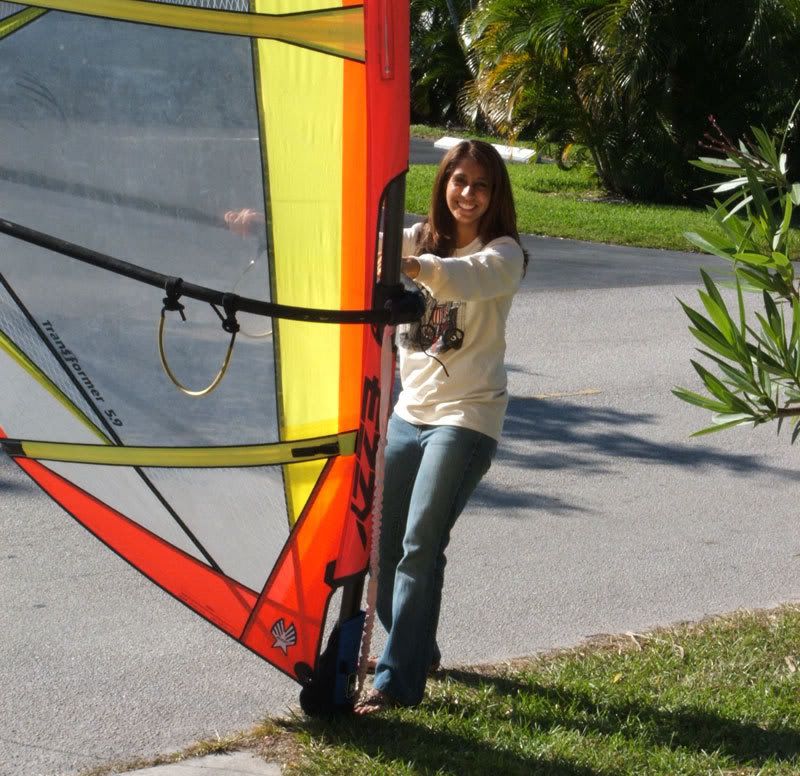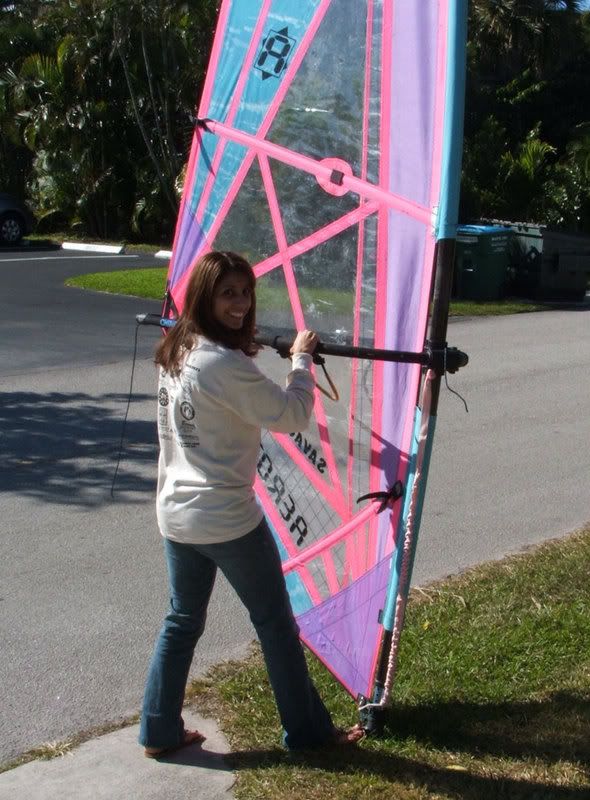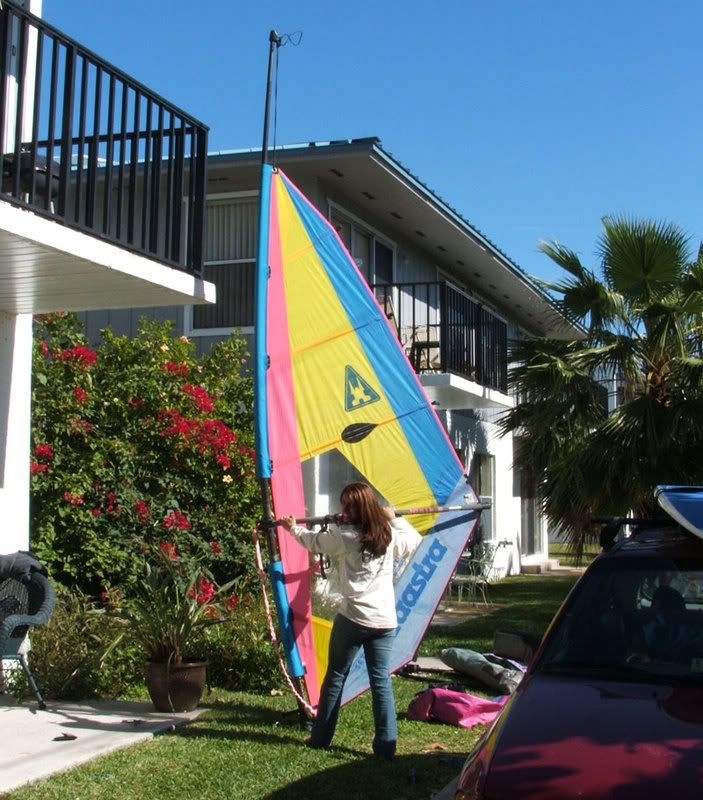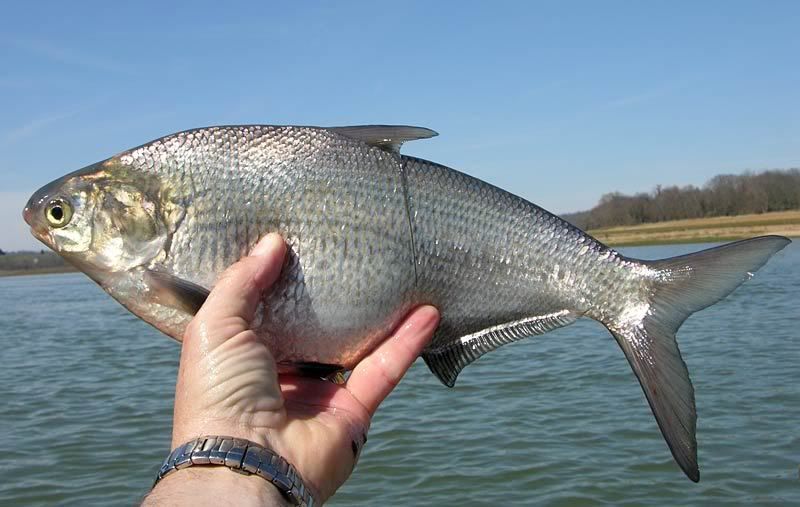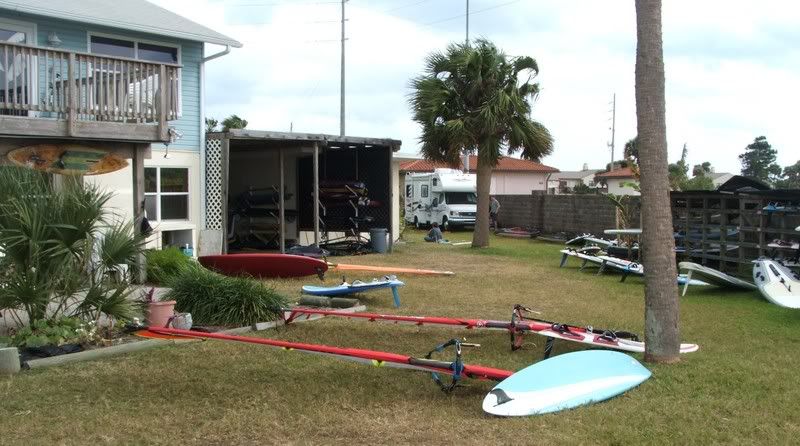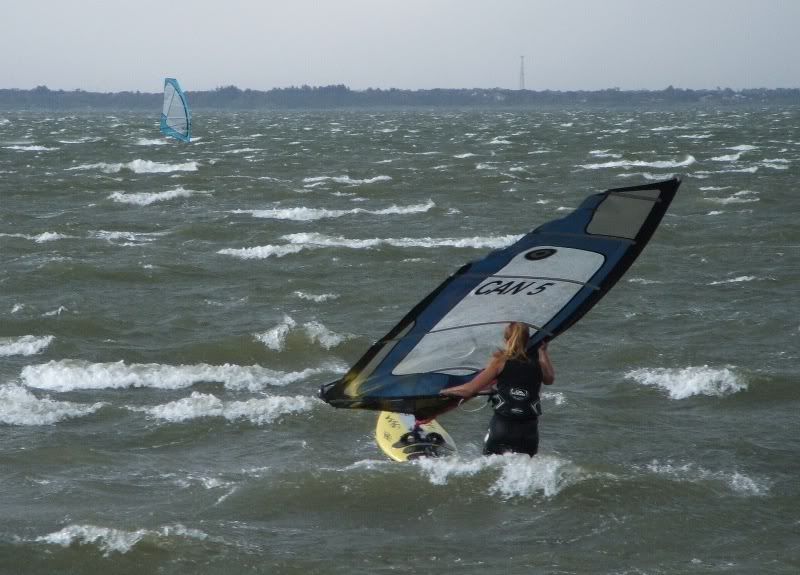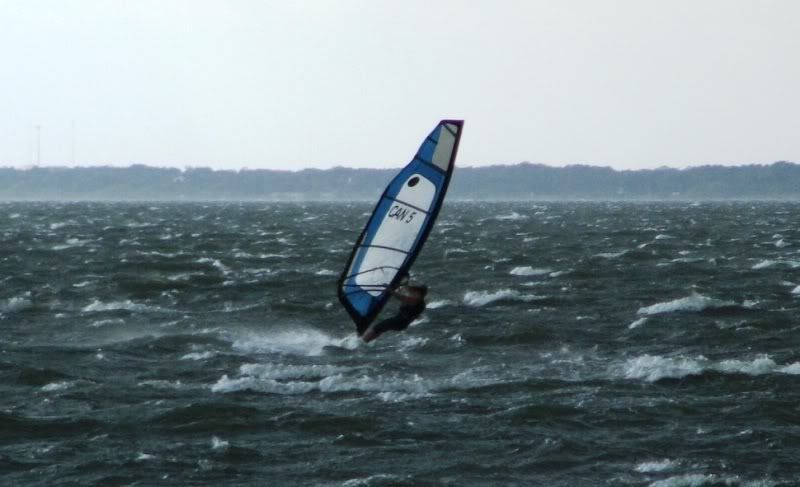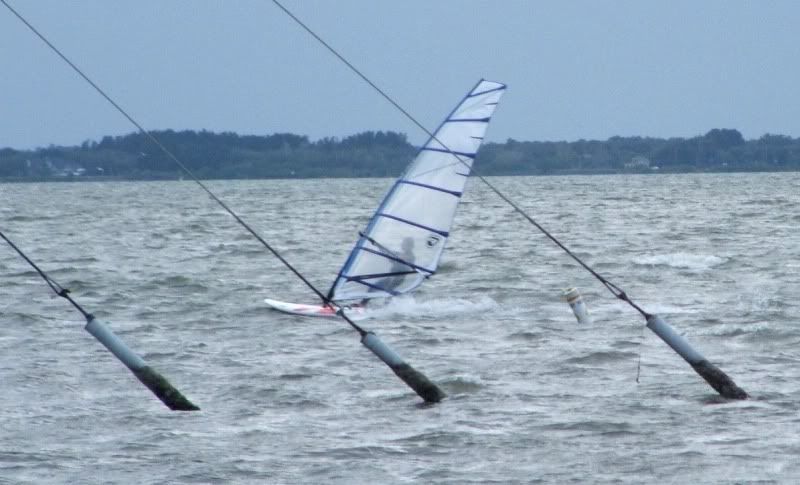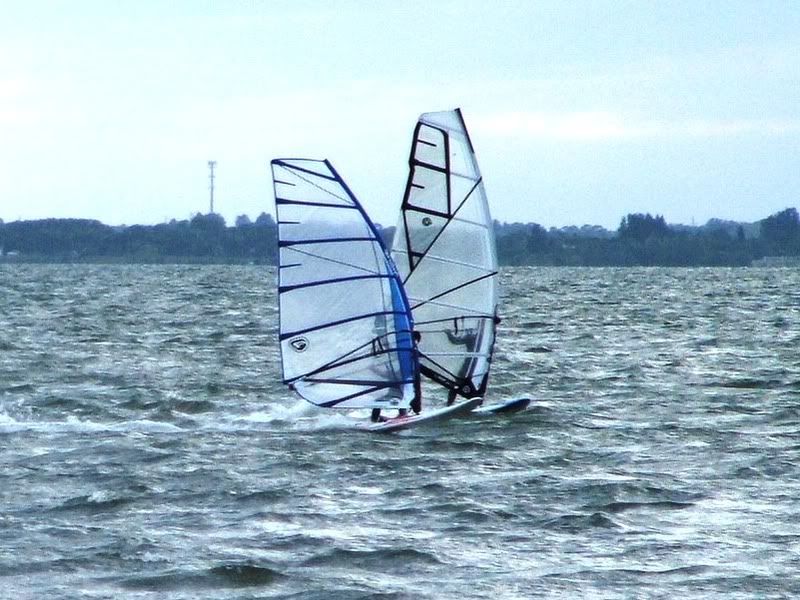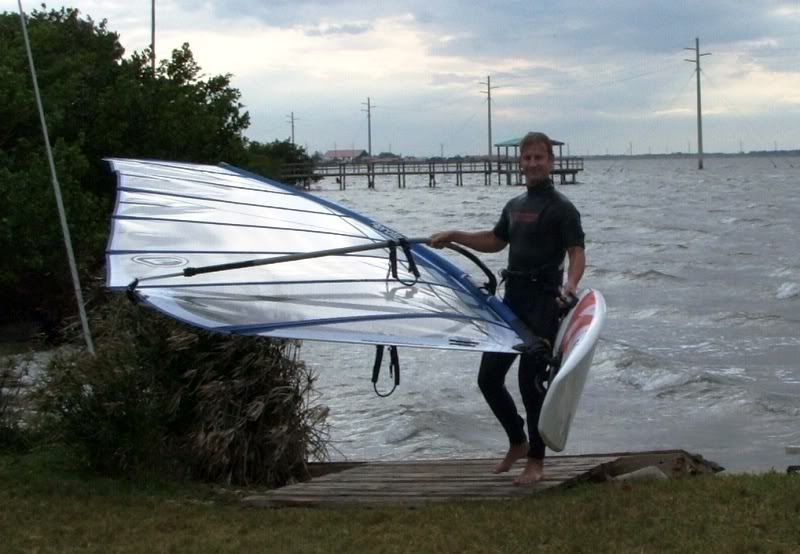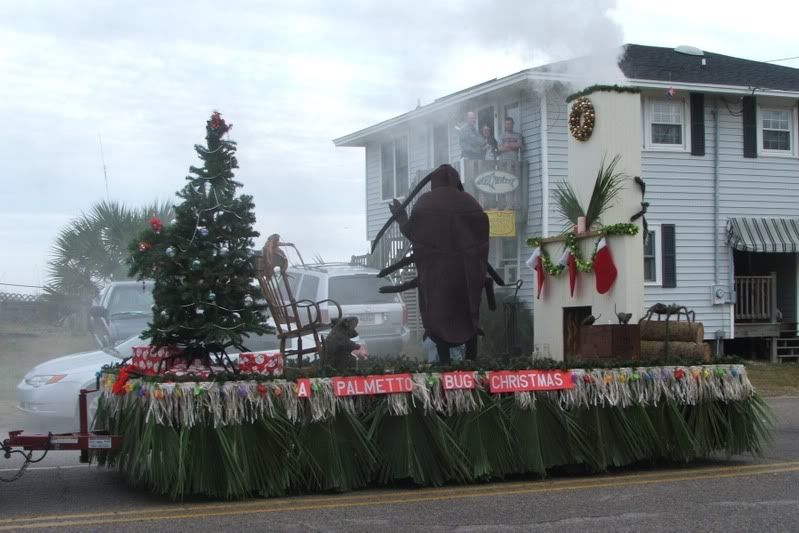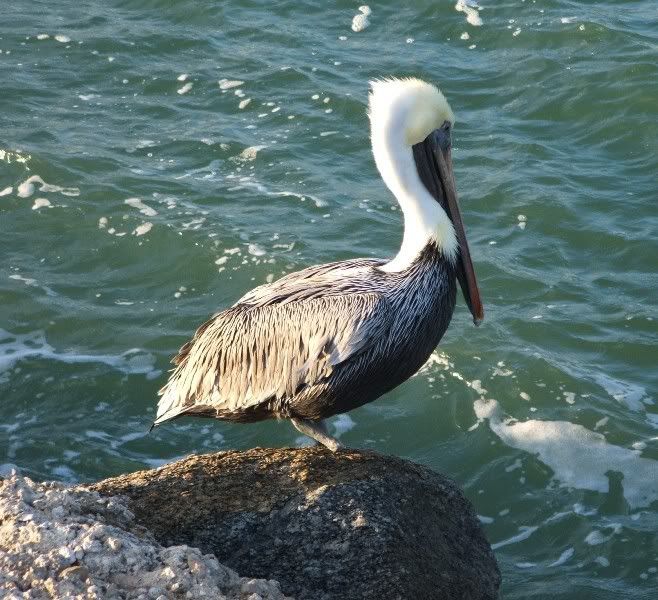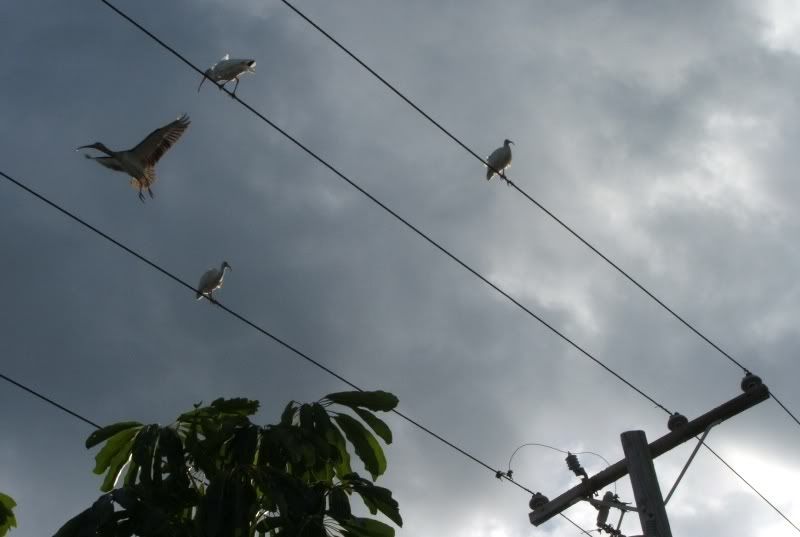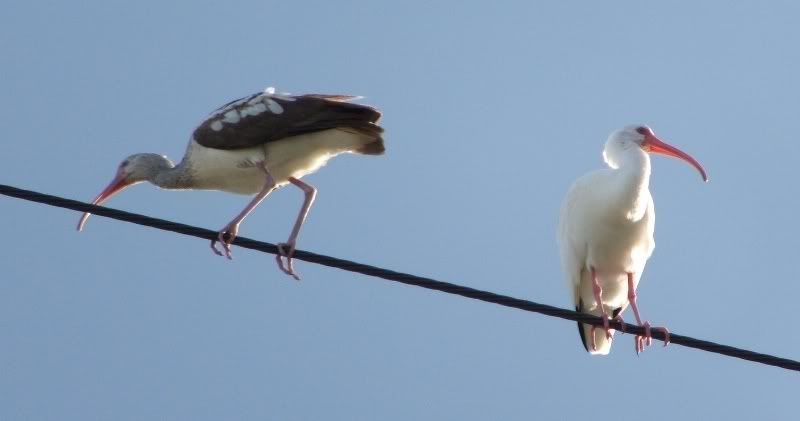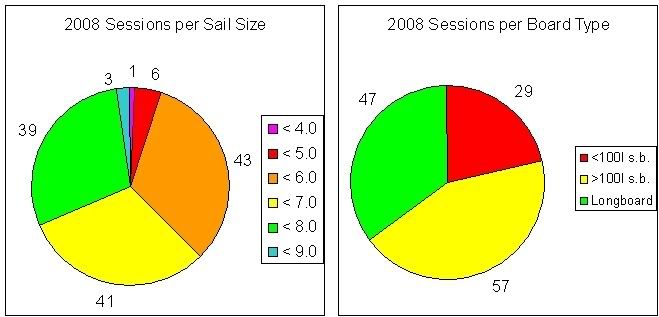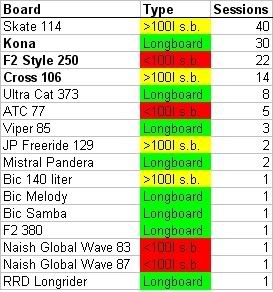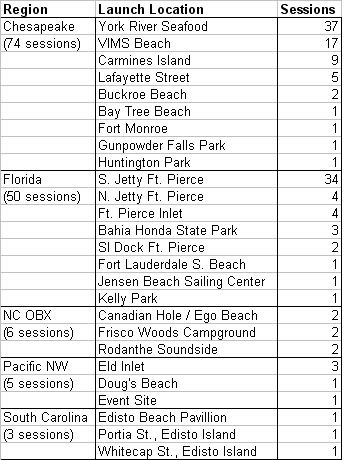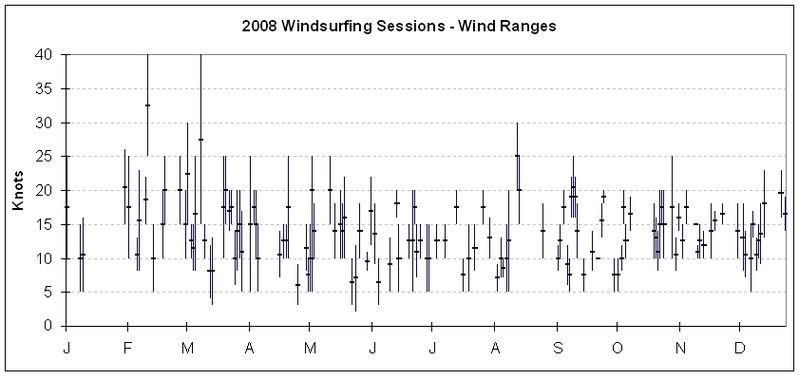FYI, I just posted two new polls in the sidebar. I'm testing the theory that most windsurfers are engineers named John, Dave, Scott, Chris, or Mike. If your name is a close variant, like "Jon", "David" or "Michael", that's good enough; don't get persnickety and mark "other".
***
WARNING- Before you read any further in this post, be aware that it is mostly boring, technical windsurfing stuff. So if you are NOT an engineer named John, Dave, Scott, Chris, or Mike, you might want to think twice.
***
Begin post-
Guess what? I got to windsurf around sunset today with
Mike Gebhardt, the OLYMPIC CHAMPION. Actually, he was kiting, and kicking my ass in terms of jumps and speed. He did that thing where you ride up alongside, just downwind, and reach out to lean on the nose of the other guy's board. Pretty cool.
It didn't bug me that he could jump higher, because everyone knows kiters can jump higher, but I wanted to be faster. Some of the speed discrepancy may have been due to the fact that I'm not an Olympic Champion who spent the last six months in Namibia working to break the kiteboarding speed record. Nevertheless, I think I could eke out a few more knots if I tuned my gear differently. I.e. if I matched my sail and fin better. The weed-wave fin I was using today (left) has a large surface area and low aspect ratio, which give it good grip and maneuverability but make it a bit sluggish. The sluggishness is pronounced when the fin is used with smaller sails, like the 5.8 I was on today. I should have used the narrow, efficient fin on the right.
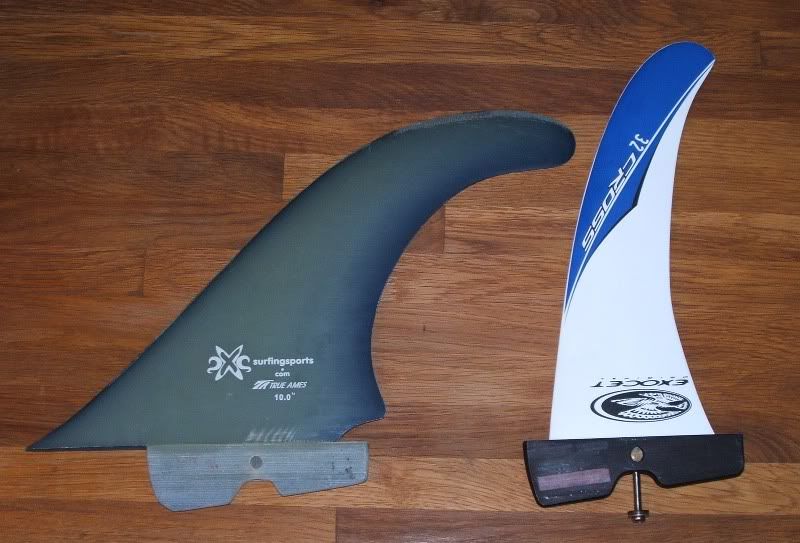
The reason I didn't was that the weed-wave fin was already in the board and I was in a hurry. Before grabbing that board I had been sailing my newly-salvaged "Clam Sandwich", but I wanted to do a cross-comparison with my main ride, which is actually called the "cross". Check out the differences in the tails and fins of the cross (top) and the clam (bottom).
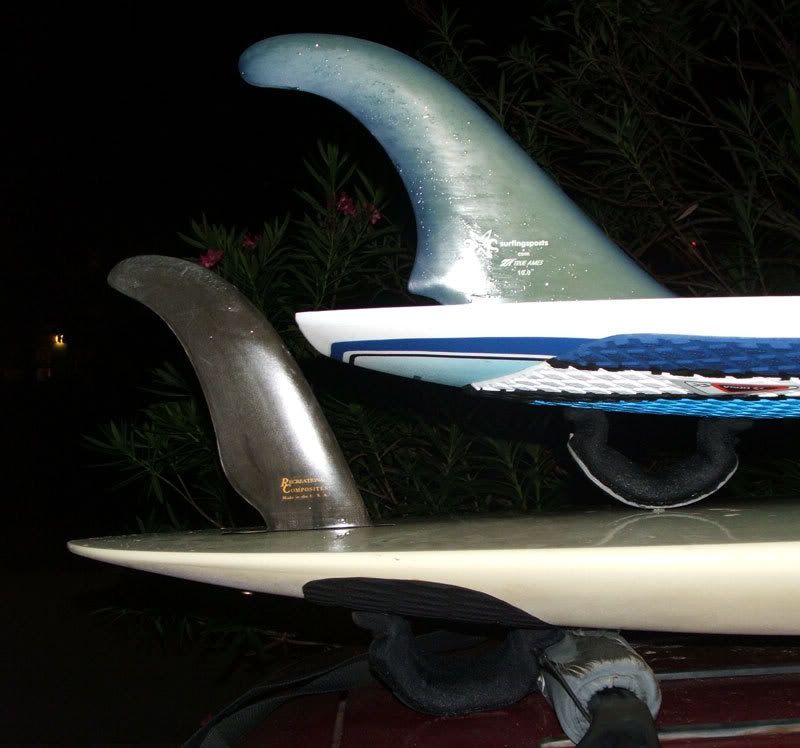
The clam sandwich is a lot thinner, huh? That really helps it slice a turn. Also, the fins are the same length (25 cm), but because of the area difference, the one on top is good with a sail around 7 msq and the one on bottom with a sail around 5 msq, I think.
I'm pretty stoked about the clam, especially since I got it for free and did the refurbishing myself this weekend. It was in decent shape to begin with, except for a botched rhinoplasty and bad back footstraps. The first thing I did was to move the good, front footstraps to the back, and replace them with some ok extra straps that I had lying around. Then I sawed off the pointy part of the nose and filed it into sort-of a blunt, trapezoid shape. I fiberglassed two layers over the area, then filed and sanded the worst lumps out of my glass job. I made a jaggedy, sunburst-shaped stencil and spray painted gold over the exposed fiberglass for beautification and UV protection. To integrate the sunburst aesthetic with the rest of the board I added some gold stars with more stencils. The result is "unique", IMHO. Perhaps I should call the new board the "Glam Sandwich".
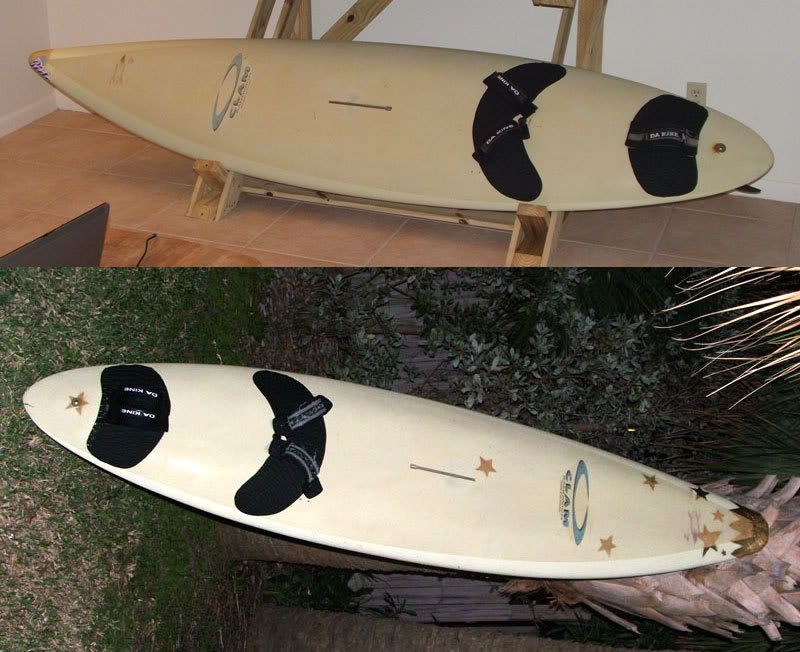
PS- I was going to sell the Clam Sandwich for $90, but now as the "Glam Sandwich", the price has gone up to $100. (The epoxy and stuff I got from @#$%! West Marine cost $100.)

